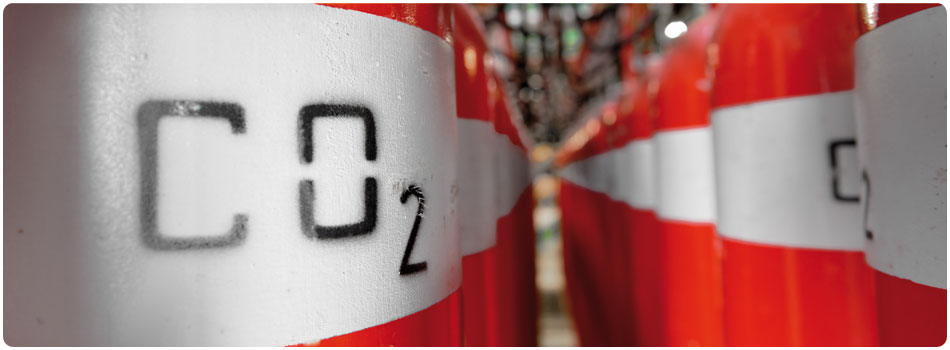Refrigerants

Most refrigerants used today are substances obtained by chemical synthesis and consequently have ideal properties for the specific purpose. Many of these, however, have negative effects on the environment, in particular they tend to destroy the ozone layer (i.e. have a high ODP, Ozone Depletion Potential) or directly contribute to the greenhouse effect (i.e. have a high GWP, Global Warming Potential).
Refrigerant nomenclature:
- CFC = chlorofluorocarbon, high ODP
- HCFC = hydrochlorofluorocarbon, low ODP, high GWP
- HFC = hydrofluorocarbon, zero ODP, high GWP
- HFO = hydrofluoroolefin, zero ODP, low GWP
- HC = hydrocarbons, zero ODP, negligible GWP
- Ammonia, CO2 = zero ODP, zero or negligible GWP
For this reason, many countries have already taken measures to prevent or limit the use of CFC and HCFC refrigerants (Montreal Protocol, 1992) and are deciding on the future of HFCs in favour of refrigerants with a low or zero ODP and GWP.
The latter include natural fluids such as carbon dioxide, ammonia, propane and other hydrocarbons. Nonetheless, these are fluids not designed to be refrigerants and are hence less efficient than synthetic refrigerants, as well as having certain negative characteristics, such as corrosiveness or explosiveness. However, their low GWP and ODP levels mean they're bound to be the most widely used refrigerants in the future.
Below is a list of the main refrigerants used in refrigeration:
CFC-12 (R12): one of the most widely used last century until being banned due to its high ODP (starting from 1996), together with all CFCs.
HCFC-22 (R22): this combines excellent chemical and physical properties with high volumetric performance, and has been used in many air-conditioning and refrigeration applications. Its ODP is quite low (0.05) but not zero. For this reason it was decided to phase it out starting in 2010, and after 2015 it can no longer be manufactured nor regenerated.
HFC-134A (R134A): this has replaced CFC-12 in home refrigeration and car air-conditioners. Its ODP is zero but its GWP is rather high. Due to its low operating pressure (2-3 times lower than all other refrigerants), it's also used in large air-conditioning units with centrifugal compressors, but it's not suitable for industrial refrigeration systems due to poor efficiency at low temperatures.
HFC-404A (R404A): this is a blend of three refrigerants that can replace R22 mainly in refrigeration applications, especially at low temperatures, without needing to redesign the refrigeration units. It has a high GWP (3780) and for this reason many countries have already decided to phase it out, a process that will be extended across the entire European Union following revision of the F-gas standard.
HFC-507A (R507A): this is a blend of two refrigerants that can replace R22, mainly for refrigeration application, equivalent to HFC-404A in terms of both weaknesses, in particular the GWP (3900) and intended use.
HFC-422A, 422D, 417A (R422A, R422D, R417A): these are blends of synthetic refrigerants with non-negligible GWP levels intended to replace R22 where R404A is not ideal due to the problems described above.
HFC-407F (R407F): this is another blend that's identical to R407C however with a different proportion of components. It has a GWP of 1800 and is used to replace R22, R507A and R404A in refrigeration applications.
HFC-410A (R410A): currently one of the most widely used solutions, this is a blend of two refrigerants that can replace R22 in air-conditioning applications and, in the future, potentially in refrigeration applications (replacing R404A), however requiring unit redesign due to the high operating pressure (twice that of traditional refrigerants). Refrigerating performance is high.
HFO-R1234YF (R1234YF): this is a newly-devised refrigerant intended to replace R134A in car air-conditioning systems. It has a very low GWP (6), however its flammability represents a barrier for its use in different applications.
HFO-R1234ze (R1234ze): like the previous, this new refrigerant is a candidate to replace R134A in domestic, commercial or industrial applications. It too has a limited GWP, and limited flammability only at high temperatures.
Propane (R290): Propane (R290): this hydrocarbon is present as a gas in nature or as a by-product of the petroleum industry. Its high explosiveness means use is currently limited to refrigeration or air-conditioning units with a low refrigerant charge (<200g) and consequently a low cooling capacity, or in niche applications with higher capacities where there is special attention to safety.
Butane and Isobutane (R600, R600a): these are hydrocarbons present as gases in nature or by-products of the petroleum industry. Their high explosiveness means use is currently limited to low-capacity refrigeration units typically in the home.
Ammonia (R717): this is a natural fluid with zero ODP and GWP, however its toxicity, corrosiveness and explosiveness mean it's still a niche refrigerant. It's used in purity in small air-conditioning units with traditional refrigeration cycles or in large refrigeration systems with absorption cooling cycles blended with water, a type that's quite different from more commonly-used systems.
Carbon dioxide, CO2 (R744): this is a natural fluid with zero ODP and GWP=1, without the negative affects of other natural fluids and as a result currently in favour in countries where there's more environmental awareness, such as northern Europe. Nonetheless it has operating pressures up to 10 times higher than other refrigerants and cannot be condensed at temperatures exceeding 20-25°C. This means that for many refrigeration applications the refrigerant circuit needs to be modified to allow operation in so-called supercritical conditions, using components that withstand high pressure and pressure control systems. The feasibility of replacing R134A with R744 in car air-conditioning is being assessed and obviously will require a redesign of the systems used until now.
